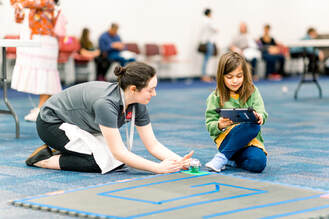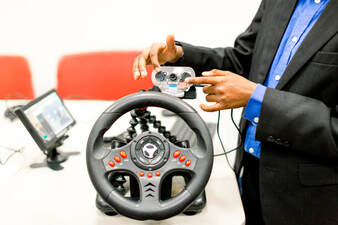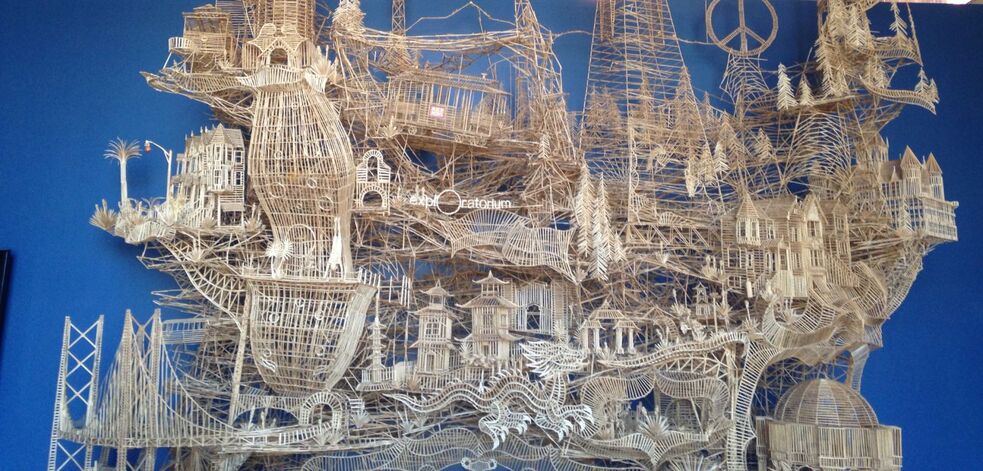Showcase Projects
Showcase Projects provide an opportunity for students to explore their interests in STEAM-related topics and develop a project highlighting their understanding and inquiry process. (Think “Project-Based Learning” such as Rube-Goldberg Machines, Reverse Engineering, Science Fiction Writing, Mixed-Media Art, Robotics and Computation)
Exhibition projects do not qualify for the CA State Science and Engineering Fair. These projects are still eligible for awards and are judged using this rubric. Exhibition projects were designed to broaden entry points into the SJCOE Fair and encourage more participation in STEAM education.
Requirements:
1. Hold Harmless permission
2. A display of your work. This could be in the form of a Tri-fold board or Poster: Limited to 121 cm (4 feet) side to side, 92 cm (3 feet) top to bottom, and 93cm (3ft) front to back. It could also be something creative and does not require all the documentation steps shown in the Investigative Project board examples.
**Science Fiction writing only: You must send a copy of your story to the STEAM Fair Coordinator one week prior to the event via email to [email protected]
2. A display of your work. This could be in the form of a Tri-fold board or Poster: Limited to 121 cm (4 feet) side to side, 92 cm (3 feet) top to bottom, and 93cm (3ft) front to back. It could also be something creative and does not require all the documentation steps shown in the Investigative Project board examples.
**Science Fiction writing only: You must send a copy of your story to the STEAM Fair Coordinator one week prior to the event via email to [email protected]
Description of Showcase Projects
Rube Goldberg Machine
|
Science Fiction Writing
|
|
A Rube Goldberg machine is a deliberately over-engineered or overdone machine that performs a simple task in a very complex fashion, usually in a chain reaction. The category is fashioned after the American cartoonist and inventor Rube Goldberg (1883-1970).
“Must Haves” for an effective project: Your display must feature a step-by-step visual of your device. Post a video of your working contraption to YouTube or similar video sharing service or use a QR code on your board. Label all simple machines involved in your project directly on your contraption AND on your diagram. Make sure several types of simple machines are included. Label all physical forces acting on your contraption. Make sure to include as many types of forces as possible when building your contraption. |
Science Fiction is a genre of fiction dealing with imaginary, but more-or-less plausible content such as future settings, futuristic technology, space travel, aliens, etc. Exploring the consequences of scientific innovations is one purpose of science fiction, making it the true future of STEM.
“Must Haves” for an effective project: An electronic version of a story entry (not the display) must be submitted no later than five days prior to the STEAM Fair event via email to [email protected]. If the entry is graphical in nature, a photograph with the explanatory text of the presentation display is acceptable. This display must explain your story. It must include: • A copy of the actual story or entry, • A summary of the entry • References to supporting research and/or similar works, • Illustrations or images that represent the story or concept (optional) |
Robotics & ComputationThe Robotics and Computation category includes robotics and computer science. This includes such applied sciences as engineering, programming, and mechanical design and such formal sciences as mathematics, logic, and statistics. Entrants in this category design, build, and operate mechanical and/or software constructions.
“Must Haves” for an effective project: The display must show a working robot or sub-assembly or, if software, the working software must be presented. Some of the display must be descriptive so that people can understand the function or purpose of the robot or software, and how it is, or could be, used. Included in that the description and clarification of any sub-components must be explained. The display must help the viewer understand the way the entry relates to real-world application (if it does). A written document that defines the functional specification of the entry, and documented code listings may also be part of the project presentation. |
Reverse Engineering & InventionThe Reverse Engineering and Invention category involves the understanding of how things work together in either a creative or evaluative manner. Reverse Engineering is to take something apart and analyze its workings, while Invention involves creating something new. Both aspects focus on a product that solves a specific problem or need.
“Must Haves” for an effective project: A complete ‘mock-up’, prototype, or construction of all or part of the device should be presented. If this is an invention this is the key physical portion of the project. The project display must have a description of the use of the device, and the benefits associated. The display should have a disassembly of the completed device showing the components and/or subcomponents with a description of their purpose and how they work. If this is a reverse engineering project, this is the key physical portion, and these pieces are expected to be the centerpiece of the display. If an invention, this portion may consist of photographs, drawings, or textual descriptions of the components (and sub-components, if any) of the device. The display should also have a description of the tools (simple or complex), methods, and sequences required in the construction or deconstruction. Marketing material is often key in describing a product or device and its inclusion is appreciated and recognized. |
Mixed-Media ArtworkThis could be any form of artwork that utilizes Science, Technology, Engineering, and/or Mathematics to develop it. It could be in the form of sculpture, portrait, digital photography, etc.
“Must Haves” for an effective project: A display of your creative and innovative artwork. Please feel free to contact Megan Smith ([email protected]) about how best to display your artwork at the STEAM Fair. We will be working with an Art Coordinator to support these entries and determine best locations during the event of the artwork. Also, a brief explanation/description of your process and the artwork would be helpful for our judges but also for STEAM Fair attendees. Artwork can be dropped off the same day as other projects (Friday, Feb. 24th) or earlier. |
Project-Based Learning ProjectsWhether it's from your school curriculum, a passion project, genius hour, etc., if it utilizes and/or celebrates STEAM, this is your category!
“Must Haves” for an effective project: The project should display the students' excitement and passion for their topic. While this may have been an assigned classroom project, what made this project unique and special for sharing? The display of this type of project is open but could include a tri-fold, poster, prototype, etc. If you have any questions or special requirements for the display, please contact Megan Smith ([email protected]). |
Page Updated 12/21/2022




